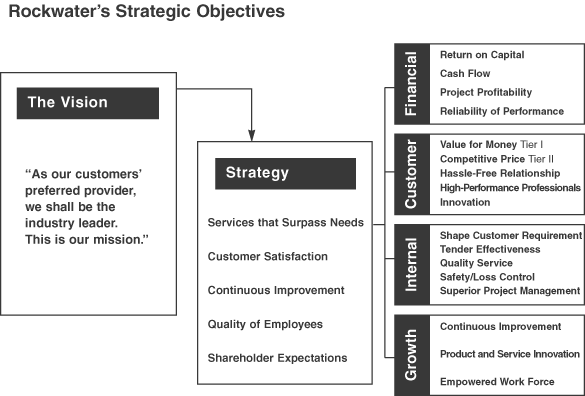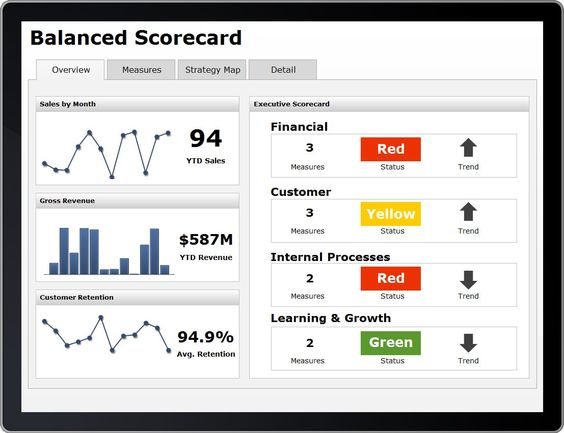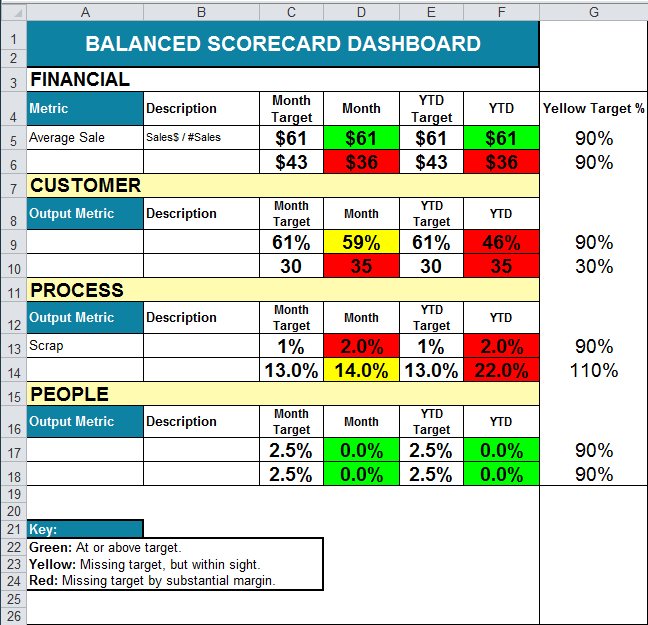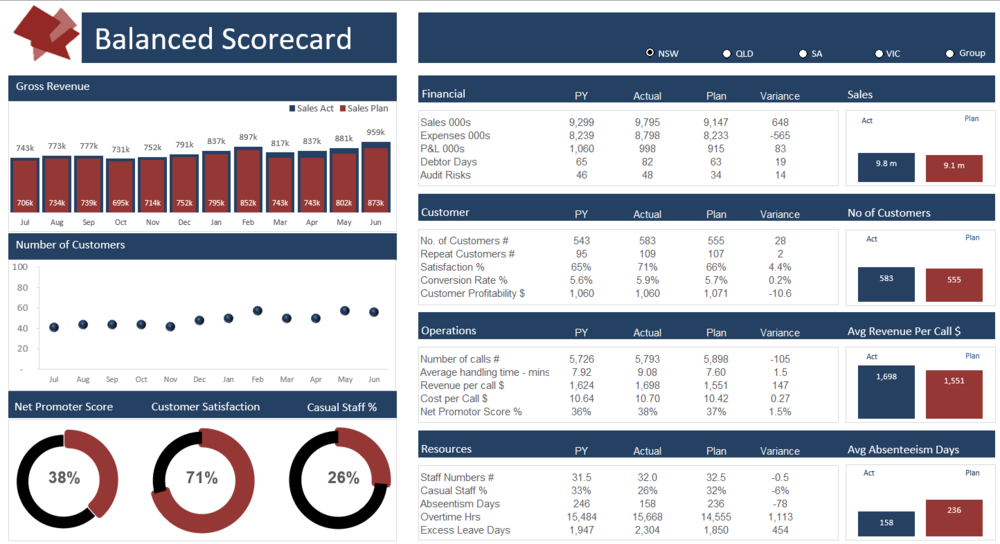Balanced Scorecard
A Balanced Scorecard manages and monitors a company’s performance against strategic goals. However, unlike traditional measurement systems, it takes a holistic view of the organization.
Dr. Robert Kaplan of Harvard University and Dr. David Norton developed it. Because they found most companies used only financial results to measure success. Though financial measures are especially important, they report what has happened in the past. As a result, it is like driving a car forward looking only in the rearview mirror.
So, their solution was to show a more complete picture. Here are 3 simple steps to build a Balanced Scorecard.
Step 1. The balanced part

There are 4 perspectives: to a Balanced Scorecard. They are used to manage the vision or mission of the company. And to measure the effectiveness of the strategy being used.
- FINANCIAL: Financial success is the initial lens to look at. Firstly, Is the company achieving its financial goals?
- CUSTOMER: Are customers happy? Because they keep financial progress moving.
- INTERNAL: How is the company improving on the way it does business? As a result, financial effectiveness and customer growth can occur.
- GROWTH AND LEARNING: Is the company able to innovate? If people have the right skills and the right products are in pipeline, then future growth should be expected.
Step 2. The scorecard
A key criteria of a good Balanced Scorecard is from the 15 to 20 measurements likely to be included, there is a clear picture of the strategy. And whether it is working or not.
Here is an example from Rockwater, a wholly-owned subsidiary of Brown & Root/Halliburton, a global engineering and construction company, which is a worldwide leader in underwater engineering and construction.

Here are some possible measurements, depending on your vision and strategy, for each of the four perspectives you might want to consider.
- FINANCIAL: Operating income, sales growth, return on assets, gross margin, cost of goods, and profits.
- CUSTOMER: Customer satisfaction, retention, cost per acquisition, average order value, % of new customers, market share, and churn.
- INTERNAL: On-time delivery, lead time, number of suppliers, and capacity.
- GROWTH: AND LEARNING: Employee satisfaction and retention, time spent on training, new products, their percent of overall sales, and the number of patents.
Step 3. The dashboard of the Balanced Scorecard
Here are examples. First, see how the 4 perspectives are in each. Second, note the use of traffic light colors to show improvement or caution.



Setting up a Balanced Scorecard isn’t complicated. It takes some work but the real value is in living by it. Do these steps help you understand a Balanced Scorecard? Do they motivate you to get started on one for your company?

